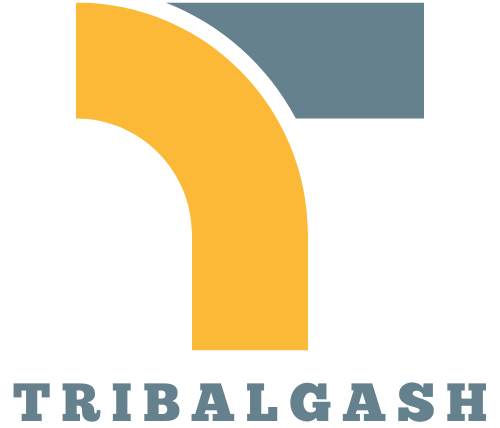Imagine a world where debts could just vanish, like a magic trick gone right. Unfortunately, that’s not the case. With global debt reaching staggering heights, understanding how to solve this crisis is crucial. This article dives into the world of global debt solutions, providing insights that range from innovative strategies to case studies of success. Whether you’re a financial expert or just someone curious about the economic landscape, buckle up. Let’s navigate the labyrinth of global debt with a clear head and a confident stride.
Table of Contents
ToggleUnderstanding Global Debt: An Overview

Global debt has become a topic of increasing concern in recent years. In 2021, the total global debt reached nearly $290 trillion, affecting economies and governments alike. Understanding the nature of global debt is imperative to tackle the current crisis. This debt encompasses everything from government bonds to corporate and household debt. It cuts across borders, intertwining economies and creating a web of financial interdependence.
Many view debt as a necessary evil: it can stimulate growth and investment. But, if not managed correctly, it spirals into a burden that can hinder economic progress. Countries facing high debt levels often experience reduced credit ratings, which then leads to higher borrowing costs and a cascading effect on the economy.
Types of Global Debt
Not all debt is created equal. Global debt can be broken down into a few key categories:
- Sovereign Debt: This is debt issued by governments. When a country borrows, it typically does so in the form of bonds. If countries default on these bonds, the repercussions can ripple through global markets.
- Corporate Debt: Businesses borrow to expand, invest, or keep operations afloat. In recent times, many corporations have relied on cheap loans to finance operations, leading to increased levels of corporate borrowing.
- Household Debt: This includes mortgages, credit cards, and personal loans. The household debt crisis is significant, especially in countries where personal consumption drives the economy.
- Emerging Market Debt: Developing countries often take on debt in foreign currencies to fund growth, a practice that can be risky if local currencies fluctuate dramatically.
Understanding these types helps clarify the priorities and strategies necessary for effective debt solutions.
The Role of International Financial Institutions
International Financial Institutions (IFIs) play a pivotal role in managing global debt issues. Organizations like the International Monetary Fund (IMF) and the World Bank provide financial assistance and policy advice to countries in need. Their involvement is crucial, especially during crises.
The IMF often steps in to manage sovereign debt crises, providing short-term financial aid in exchange for economic reforms. Meanwhile, the World Bank focuses on development projects that can contribute to long-term economic stability. Both institutions work hand in hand to ensure that countries don’t spiral into debt without support.
But, critics argue that the measures implemented by these institutions may often come with conditions that could hinder growth. Balancing necessary support with local economic needs remains a constant challenge.
Innovative Debt Solutions Around the World
In dealing with the complex web of global debt, innovative solutions have emerged, showcasing creativity in financial management. For example:
- Debt Swaps: Countries with high debt levels may negotiate to swap their debts for investments in local projects, such as environmental initiatives. This ensures that debt is utilized for productive purposes, fostering growth and sustainability.
- Green Bonds: These are specific types of loans used for environmentally-friendly projects. By leveraging the growing interest in sustainability, many countries opt for green bonds to finance projects that benefit both the economy and the planet.
- Blockchain Solutions: Blockchain technology has introduced transparency in debt issuance, offering new ways to track and manage debt in real-time, making it harder for corruption and mismanagement to occur.
Such innovations demonstrate that while the world faces a debt crisis, there are creative paths forward.
Case Studies: Successful Debt Resolution Efforts
Examining successful debt resolution efforts can provide valuable lessons. For instance:
- The Heavily Indebted Poor Countries (HIPC) Initiative was a groundbreaking model in the late 1990s that released nearly $100 billion in debt relief to 36 eligible countries, promoting social and economic development.
- Greece’s Debt Restructuring in 2018 is another notable example. After nearly a decade of austerity, the nation successfully restructured its debt, allowing for renewed investment and growth.
These examples illustrate how proactive steps can lead to effective solutions in alleviating debt burdens.
Challenges Facing Global Debt Solutions
Even though the strides made in addressing global debt, numerous challenges remain. One significant issue is the political landscape: governments may hesitate to carry out necessary reforms due to public backlash. Rising populism also complicates decision-making processes. Also, the lack of coordination across borders leads to fragmented solutions.
Also, emerging risks, driven by economic downturns, such as the global pandemic, have exacerbated existing issues. With economic uncertainty looming, nations face the dual threat of increasing debts and diminishing revenues, making debt solutions more urgent and complex.
The Future of Global Debt Solutions
Looking ahead, the future of global debt solutions will likely see a focus on sustainability and equity. Economic recovery from the pandemic has emphasized the need for inclusive growth that benefits all citizens, not just the elite.
Digital innovations will also play a pivotal role in creating transparent financial systems that adapt quickly to changing economic climates. Countries may increasingly look towards international collaboration, sharing best practices and innovations to forge a path out of debt crises.









